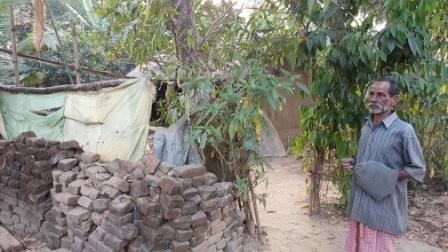While Puri has achieved 76 per cent sanitation overage, this village has only 18 per cent toilet coverage
Bantaligram (Puri): Puri district in Odisha has been able to achieve 76 per cent toilet coverage under the Swachh Bharat Mission (rural), but fails to come anywhere close to the national average of 98 per cent or the state average of 77 per cent.
As per latest statistics, there are several rural pockets in the district that have not even crossed 20 per cent coverage. This correspondent visited one of the worst performing village panchayats – Bantaligram in the Gop block of Puri district, to understand why the district administration has failed miserably to ensure adequate toilets for villagers.
Official figures obtained from the gram panchayat shows it has 1,293 households but toilets have been constructed for only 234 households. The remaining 1,059 households are left with no option, but to defecate in the open as the district administration has failed to reach out to them and construct enough toilets. The panchayat has only 18 per cent sanitation coverage.
”There are lots of poor people in the village. If you see the status of the village, most of the houses here have thatched roofs and are kuccha constructions. When they do not have a proper house how can they construct toilets,” said Chitaranjan Senapati, a small trader from the village. He added, “The poor cannot afford to construct toilets and wait for reimbursements from the government later”.
A detailed guideline by the Ministry of Drinking Water and Sanitation, the nodal ministry handling the mission, bats for a local volunteer (swacchagrahi) from the village/panchayat to persuade the villagers construct toilets and discuss the consequences of absence of toilets. However, villagers told that in their case the norm exists only on papers.
“Sometimes we do see some government officials visiting the village for the Swachh Bharat Mission, but the local leader or volunteer concept is non-existent here. There had been news about delay in payment of incentives by the local offices, which is dithering the poor villagers to invest in constructing toilets,” said Ranjan Kumar Das, another villager from Bantaligram.
Veterans from the village claimed that most people here are into open defecation due to absence of toilets in the village. Disamnath Swain, a sexagenarian from the village, said, “We are suffering due to absence of toilets in the village. Ladies, kids and the elderly are forced to go out in winter, summer and even on rainy days. The issue cascades for the sick as there are a lot of poor villagers who cannot afford toilets. Moreover, the government does not provide any advance to construct toilets.”
In the Swachh Bharat guidelines, the Union government while talking about the incentives on toilet construction says, “…the ministry encourages states and districts to motivate households to make self-investment for construction of households. This may also be used to maximize coverage so as to attain community outcomes. States will have flexibility regarding the utilisation of the incentive.”
Most of the villagers said that if the government constructs the toilets completely or pays the beneficiaries the entire amount in advance then the sanitation revolution under the mission would get an impetus.
